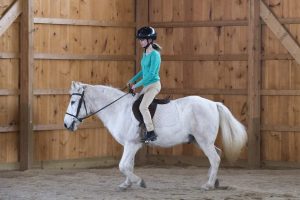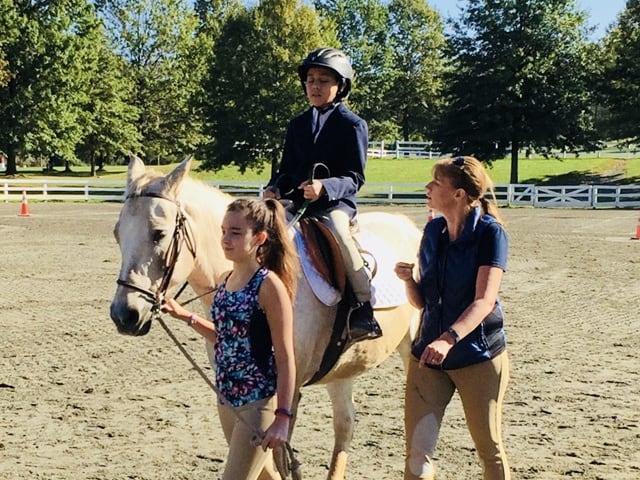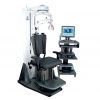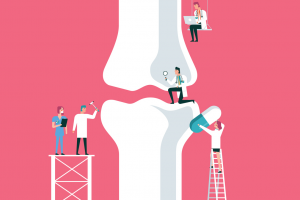
Spotlight on Equine Therapy
Treatment GuidelinesTherapeutic horseback riding, or equine therapy, provides clinical treatment in a barnyard setting. Patients engage in highly interactive and fun activities. Equine therapy can be used to treat a variety of diagnoses, both physical and behavioral.
This article was submitted by TherapySpark subscriber Grace Yi, Doctor of Occupational Therapy Candidate at the University of the Sciences in Philadelphia. Do you have a unique story to share – about patient success, unique treatment techniques, or business outcomes? We want to hear from you!
“There is something about the outside of a horse that is good for the inside of a man.” – Winston Churchill
Humans and horses share an extensive history together. Through travel, industrial development, and wartime, horses have heavily shaped human civilizations. Today, that relationship continues with therapeutic horseback riding.
Clinical Application of Equine Therapy
Therapeutic horseback riding, or equine therapy, provides clinical treatment in a barnyard setting. Patients engage in highly interactive and downright fun therapeutic activities. Equine therapy can be used to treat a variety of diagnoses, both physical and behavioral. With practice, it can improve participants’ quality of life in almost all major areas.
As a proven therapeutic method, equine therapy supports patients with Autism spectrum disorder, attention deficit / hyperactivity disorder, cerebral palsy, Down syndrome, traumatic brain injury, and multiple sclerosis. It also helps those suffering from hearing or visual impairments, learning and developmental disabilities, and many other conditions.
With animal-assisted therapy, patients can improve their physical, cognitive, social and emotional abilities. Guided horseback riding helps build balance, coordination, flexibility, range of motion, and strength. Along with these physical skills, riders also benefit from cognitive development. Riding helps develop attention and focus, safety awareness, problem solving, executive functioning, and speech.
While horseback riding provides these direct physical and cognitive benefits, it also indirectly influences social and emotional development. As a recreational activity, horseback riding requires communication between the rider and the horse. As a therapeutic activity, it also requires communication between the rider and the instructor. Participants benefit from this opportunity to learn both how to give and how to take instructions.
Participants learn to give verbal and nonverbal direction to the horses. In turn, they can learn to recognize and respond to the horses’ nonverbal signals, such as affection or stress. Many patients develop genuine friendships with their therapy horses, a primary attraction to the practice overall.
Equine therapy is a guided exercise, so therapists are almost always working alongside the participants. This instructive interaction helps participants improve their social skills. They also have the opportunity to socialize with other participants and their families.
Guided Therapy Sessions
During most therapy sessions, the participant rides with the help of two side walkers. If necessary, a leader guides from the front to ensure their safety. No matter the beginning level of functional ability, the goal is to reach independent riding.
As with most types of therapy, the specific exercise chosen for each patient depends on their unique needs. Equine therapy includes both on- and off-horse activities. Most therapy sessions combine both types of exercises for an individualized patient experience.
Real Patient Outcomes from Unicorn Therapeutic Riding
The unicorns aren’t real, but Unicorn Therapeutic Riding in Pennington, New Jersey, gives its patients real results. Unicorn Therapeutic Riding has been nurturing patients with equine therapy for 30 years. Licensed Occupational Therapist Erin Hurley founded the organization on a small family farm. She has since grown the practice to include numerous services, including both indoor and outdoor riding.

Unicorn Therapeutic Riding supports several local families, often working with children as patients. One mother, Melissa, enrolled her 5-year-old twins. The twins had been suffering from erratic behavior, inattention, and physical impairments that affected their daily lives at home and at school.
“For Grant, the routine of entering the barn, putting on his helmet and waiting for instruction has supported his ability to follow routine independently, and he receives the instant reward of riding.”
After the boys’ diagnosis of ADHD and moderate Autism spectrum disorder, she sought therapy that could help her family. Equine therapy improved the boys’ behavior and cognitive skills with fun and meaningful therapy.
“Noah loves riding, and I feel it has given him confidence. Since starting riding, he is more willing to try tasks and displays sustained effort in tasks he would previously refuse.”
Melissa’s sons continue to build their cognitive, behavioral, and social abilities. They practice following routines and exercising patience. As the training boosts their confidence and independence, they will continue to learn and grow.
With equine therapy, patients receive clinic-quality training in a hands-on, interactive environment. Supplementing the proven physical benefits, it encourages emotional and social connection. Equine therapy offers proven, multi-faceted benefits for a variety of diagnoses, and brings joy to patients and their families.
To learn more about the power of equine therapy, contact Grace Yi at gyi@mail.usciences.edu.
Grace Yi
Doctor of Occupational Therapy Candidate
University of the Sciences in Philadelphia





